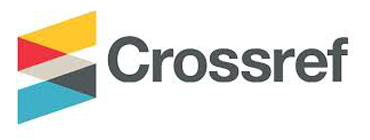THE IMPLEMENTATION OF KNOW-WANT-LEARNED STRATEGY TO IMPROVE THE STUDENTS’ READING COMPREHENSION IN NARRATIVE TEXT AT MTSS INSAN CITA MEDAN
Abstract
This research was aimed to find out the impact of using Know-Want-Learned strategy in improving the students’ reading comprehension. The subject of this research was the ninth grade students of MTsS Insan Cita Medan in academic year of 2020/2021 which consisted of 44 students. This research was conducted by using classroom action research, which used two cycles. Each of them consists of planning, acting, observing, and reflecting. The data were obtained through quantitative and qualitative data. The quantitative data was obtained from tests including pre-test, post-test I, and post-test II. While qualitative data was obtained from interview and observation sheet. The result of the data analysis showed that there was an improvement on the students’ reading achievement from each cycle. It was shown from the students’ mean score in pre-test was 57,8 increased to 70,4 in post-test I and increased to 80,5 in post-test II. In the pre-test there were 18,2% (8 of 44 students) who got score > 75. In the post-test I, there were 45,4% (20 of 44 students) who got score > 75. In the post-test II, there were 88,6% (39 of 44 students) who got score > 75. For the hypothesis testing used t-test formula, the result of t-test was tobserved (10,30) > ttable (2,018). Thus, alternative hypothesis (Ha) could be accepted. Based on the finding, alternative hypothesis (Ha) saying that K-W-L strategy could improve the students’ reading comprehension in narrative text.
Full Text:
PDFReferences
Alderson, J. Charles. (2000). Assessing Reading. Cambridge: Cambridge University Press.
Ali, Abdullah Yusuf. (2001). The Meaning of The Holy Qur’an, Maryland: Amana Publications.
Andrew, K, Shenton. (2004). Strategies for Ensuring Trustworthiness in Qualitative Research Projects. Education for Information: Northumbria University.
Aryani Fifin Dwi. (2007). The Effect of Kwl on EFL Student’s Reading Comprehension. Thesis: At PBSI FBS UNY Yogyakarta.
Bos, C. and Vaughn, S. (2002) Strategies for Teaching Students with Learning and Behavior Problems. USA: Rinehart and Winston, Inc.
Brown, D. H. (2001). Teaching by Principles: An Interactive Approach to Language Pedagogy. White Plains: Pearson Education Company.
Brown, H. D. (2007). Principles of Language Learning and Teaching (Fourth Edition). New York: Pearson Education.
Burns, Anne. (2010). Doing Action Research in English Language Teaching: a guide for practitioners. London & New York: Routledge.
Carr, E. & Ogle, D. (1987). “KWL Plus: A strategy for comprehension and summarization”. Journal of Theory and Practice in Language Studies. 30 (7), 626-631.
Dorn, Linda et al. (2005). Teaching for Deep Comprehension. United States. Stenhouse Publisher.
Fengjuan, Z. (2010). The integration of the know-want-learned (kwl) strategy into english language teaching for non-english majors. Chinese Journal of Applied Linguistics, 33 (4), 77-86.
Harmer, J. (2011). How to Teach English. Essex: Pearson Education Limited.
Hudson, T. (2007). Teaching Second Language Reading. New York: Oxford University Press.
Karang, A.A.A Putri Dian Purnami. (2014). Improving Reading Comprehension through KWL Strategy at the Eight Grade Students of SMPN 1 Amlapura in Academic Year 2013/2014. Publish Thesis. University Denpasar. Kemmis, Stephen and Robin McTaggart. (2007). Participatory Action Research, Thousand Oaks: Sage Publication Ltd.
Khan, Muhammad Muhsin. (1997). The Translation of the Meanings of Shahih Al-Bukhari Arabic-English Vol.1. Riyadh: Darussalam.
Klingner, K. J., Vaughn, S., Boardman, Alison. (2007). Teaching Reading Comprehension to Students with Learning Difficulties. New York: The Guilford Press.
Masganti. (2011). Metodologi Penelitian Pendidikan Islam. Medan: IAIN Press.
Miller, Debbie. (2013). Reading with Meaning: Teaching Comprehension in the Primary Grades. USA: Stenhouse Publishers.
Nugrahani, Arifiyati dan Fernando. (2006). Language to Use English. Jakarta: Piranti Darma Kalokatama.
Ogle, DM. (1986). K-W-L: A Teaching Model that Develops Active Reading of Expository Text. The Reading Teacher 39(6), pp. 564–570.
Pang, S. et al. (2003). Teaching Reading. Brussels: International Academy of Education (IAE).
Pradiyono. (2007). Pasti Bisa! Teaching Genre Based Writing. Yogyakarta: Andi.
Shihab, M Quraish. (2009). Tafsir Al- Mishbab: Pesan, Kesan, dan Keserasian Al-Qur’an. Jakarta: Lentera Hati.
Singh, Yogesh K. (2006). Fundamental of Research Methodology and Statistics. New Delhi: APH.
Snow, C., Chair. (2002). Reading for Understanding (Towards an R&D Program in Reading Comprehension). Santa Monica: RAND.
Spencer, Lauren. (2005). A Step-by-Step Guide to Narrative Writing. New York: The Rosen Publishing.
Sudijono, Anas. (2008). Pengantar Statistik Pendidikan. Jakarta: PT. Raja Grafindo Persada.
Sulaiman, Imam Hafiz Abu Dawud. (2008). English Translation of Sunan Abu Dawud Vol.4, Riyadh: Darussalam.
Sudjana. (2002). Metode Statistika. Bandung: PT. Tarsito.
Teixeira, J. (2012). Developing different skills using different texts. E- TEALS: An e-Journal of Teacher Education and Applied Language Studies, 3, 15-29.
Yuniarti, Eko. (2013). Improving the Students’ Reading Comprehension Through Know-want-Learn Technique at the Eleventh Grade of SMA Negeri 1 Sanden in the Academic Year of 2012/2013. Publish Thesis. State University of Yogyakarta
Refbacks
- There are currently no refbacks.

This work is licensed under a Creative Commons Attribution-NonCommercial-ShareAlike 4.0 International License.
INDEXING
Bright Vision by UIN Sumatera Utara Medan is licensed under a Creative Commons Attribution-NonCommercial-ShareAlike 4.0 International License.
Based on a work at http://jurnaltarbiyah.uinsu.ac.id/index.php/brightvision.









